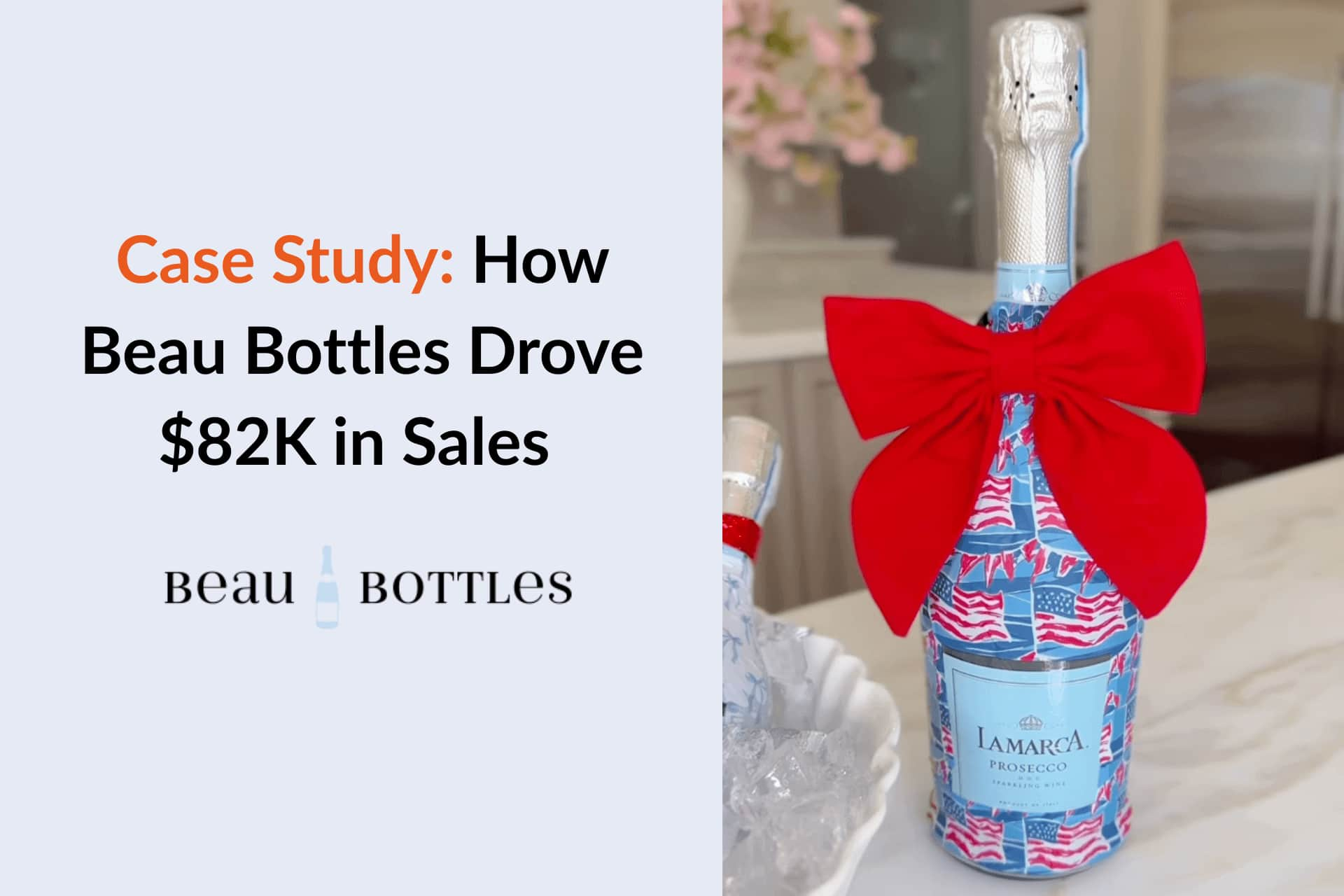





With over 89% of marketers stating that ROI from influencer marketing is equal to or better than other channels in 2025, choosing the right software has become more critical than ever.
BrandChamp has been praised for its strong affiliate program management tools and user-friendly campaign tracking, making it a solid option for many businesses. However, users often express concerns about its limited influencer discovery features, lack of advanced reporting, and pricing that feels steep compared to competitors, which leads many to consider alternatives.
Here are the Top 10 BrandChamp Alternatives to consider before choosing the right platform for you and your brand:
1. Influencer Hero
2. Modash
3. Upfluence
4. Captive8
5. CreatorIQ
6. HypeAuditor
7. Grin
8. Saral
9. Onclusive
10. MOGL
While BrandChamp offers solid tools for affiliate and ambassador program management, several limitations have led businesses to seek alternative solutions:
BrandChamp focuses heavily on managing ambassador programs rather than offering robust influencer discovery features. Brands that need access to large creator databases with advanced filters often find the platform restrictive.
Users have reported that BrandChamp’s reporting lacks the depth needed to measure ROI effectively. Compared to competitors, the analytics dashboard provides fewer insights into campaign performance and audience engagement.
Many marketers mention that onboarding with BrandChamp can be challenging, requiring significant time to fully utilize the platform. This complexity can slow down campaign launches for fast-moving D2C brands.
Despite offering core ambassador management tools, several users feel that BrandChamp’s pricing is high for the feature set provided. Businesses often turn to alternatives that provide more comprehensive capabilities—such as influencer discovery, outreach automation, and affiliate tracking—at a similar or lower cost.
Our comparison focuses on several key aspects:
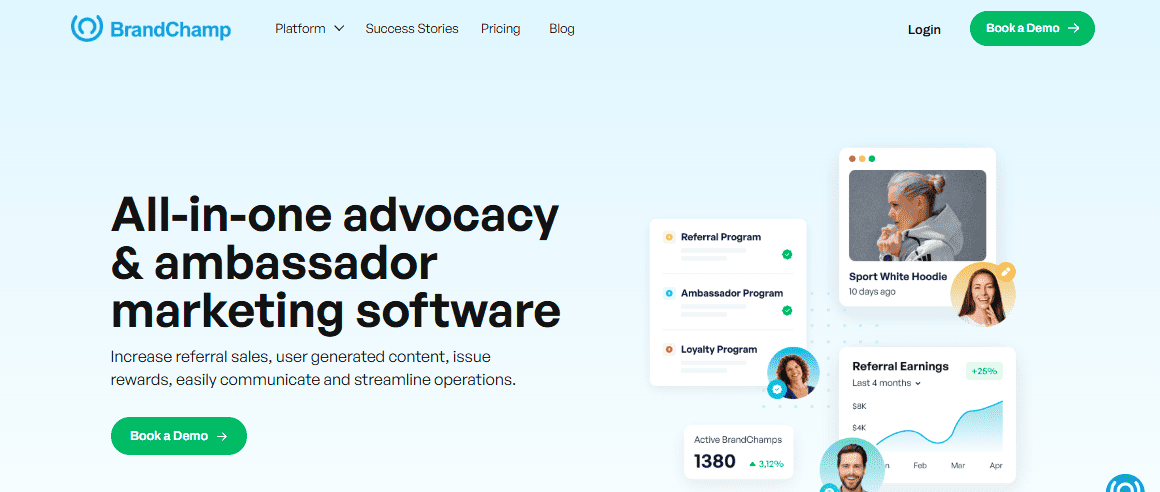
Best For: BrandChamp is best suited for eCommerce brands, particularly those on Shopify, aiming to scale ambassador and referral programs while fostering long-term community engagement. It’s ideal for companies seeking to turn customers, influencers, and brand advocates into active promoters through structured rewards and activities.
Platform Coverage:
Pricing: BrandChamp offers four annual subscription plans with a 12-month commitment. Brands can choose to pay monthly or annually (with two months free for annual payments). Specific pricing tiers are provided during demos based on brand size and needs.
Reviews: 4.6/5 (G2)
Ease of Use (UX/UI): Users frequently praise BrandChamp for its simple and intuitive interface that makes managing ambassador programs straightforward. The branded portal and mobile app improve participant engagement, allowing brands to organize campaigns without technical hassle.
Customer Support: Customer support is highlighted as responsive and strategic, offering onboarding assistance, campaign best practices, and ongoing help to ensure brands can maximize their programs. Users also appreciate the flexibility and guidance provided during implementation.
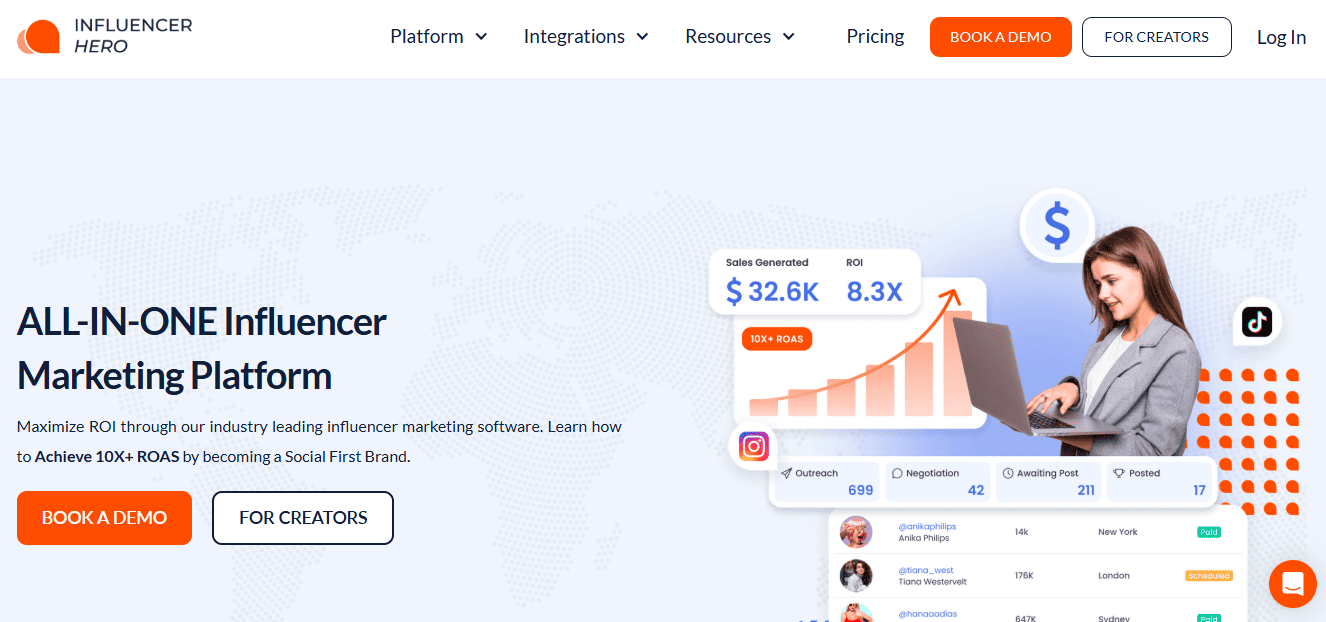
Best For: Influencer Hero is best for D2C brands and eCommerce businesses on Shopify, WooCommerce, or custom setups that need an all-in-one influencer marketing solution to scale campaigns efficiently while maximizing ROI.
Platform Coverage:
Pricing: Influencer Hero offers flexible pricing plans to accommodate growing brands. All plans include core features and can scale as the influencer program grows.
Reviews: 5.0 / 5.0 (Capterra)
Ease of Use (UX/UI): Users praise Influencer Hero for its clean interface and intuitive dashboard that makes campaign management simple. Automated workflows, AI-driven personalization, and a Chrome extension save marketers hours weekly while eliminating manual processes.
Customer Support: Influencer Hero stands out for its premium support. It offers 24/7 real-human live chat, responsive email assistance, and an extensive Help Center with written and video tutorials. Every plan includes a dedicated account manager from day one, while Pro users also gain access to a private Slack channel for ongoing strategy consultations.
While BrandChamp focuses on ambassador marketing and community-driven advocacy, Influencer Hero offers a broader set of tools that cover the entire influencer marketing cycle.
Pricing is another major distinction. BrandChamp does not publicly disclose pricing, making it harder for smaller brands to evaluate costs upfront, while Influencer Hero provides transparent pricing starting at $649/month with all core features included. Unlike BrandChamp, Influencer Hero integrates fully with Shopify and WooCommerce for automated gifting, affiliate tracking, and payments—removing manual tasks for brands.
For brands seeking a platform that combines influencer discovery, outreach automation, ROI tracking, and eCommerce integration under one roof, Influencer Hero is the more comprehensive and scalable choice.

Best For: Modash is best for eCommerce brands on Shopify or DTC businesses looking to scale influencer and affiliate campaigns through automated outreach and performance tracking.
Platform Coverage:
Pricing: There are different plans and options.
Reviews: 4.7/5 (G2)
Ease of Use (UX/UI): Users appreciate Modash for its streamlined interface and powerful filtering options, making influencer search and outreach simple even for large-scale campaigns. The dashboard is intuitive, though some note that advanced settings may require initial onboarding to fully leverage.
Customer Support: Modash is praised for responsive customer support and thorough onboarding assistance. Brands mention helpful guides and quick replies, although live chat is not available 24/7, which can delay responses in different time zones.
BrandChamp focuses heavily on ambassador and referral programs, offering strong community engagement tools, gamified tasks, and flexible reward structures. However, it lacks the advanced influencer discovery and automation features that Modash excels at. Pricing for BrandChamp is tailored and can be higher depending on program size, while Modash starts at $199/month, making it more predictable for smaller brands.
Modash, on the other hand, is a better fit for brands seeking robust influencer search capabilities, Shopify-powered automation, and real-time analytics. It does not include BrandChamp’s gamification and community features, but its AI-powered discovery and affiliate automation make it highly efficient for scaling DTC influencer campaigns. If advanced search, outreach, and streamlined workflows are your priority, Modash is the stronger choice.

Best For: Upfluence is best suited for eCommerce brands, particularly those on Shopify or Amazon, looking to scale influencer marketing campaigns with seamless affiliate tracking and strong ROI attribution. Its integrated features make it ideal for brands wanting to convert existing customers into advocates.
Platform Coverage:
Pricing:
Reviews: 4.5/5 (G2)
Ease of Use (UX/UI): Users report that Upfluence offers a modern, intuitive dashboard with easy navigation between influencer search, outreach, and campaign management. However, some note that its feature richness can lead to a learning curve during the initial setup.
Customer Support: Users highlight the support team as responsive and helpful, particularly during onboarding. However, due to its robust nature, brands often rely on customer success managers for guidance to maximize the platform’s capabilities.
BrandChamp focuses heavily on ambassador and advocacy programs, leveraging gamified community engagement, referral links, and reward catalogs to keep participants motivated. It excels in building long-term relationships but lacks advanced analytics and integrations for affiliate tracking compared to competitors. Pricing for BrandChamp is usually lower than Upfluence, making it appealing for smaller businesses that prioritize community-driven campaigns over deep analytics.
On the other hand, Upfluence provides an end-to-end influencer marketing solution with robust integrations for Shopify and Amazon, bulk payments, and AI-powered outreach. While it comes at a higher cost ($1,276/month with annual contracts), it is well-suited for brands that rely on data-driven campaigns and need strong eCommerce integration.
Brands seeking a cost-effective community engagement tool may prefer BrandChamp, while those wanting comprehensive analytics, automation, and direct ROI tracking should lean toward Upfluence.

Best For: Captiv8 is best for enterprise brands with large budgets that need deep analytics, AI-powered influencer discovery, and integrated campaign management to scale influencer marketing at a global level.
Platform Coverage:
Pricing: There are different pricing options:
Reviews: 4.1/5 (G2)
Ease of Use (UX/UI): Users report that Captiv8 offers a robust and modern interface with customizable filters and dashboards, though some mention it has a learning curve due to its complexity. The saved filter and drag-and-drop reporting features are particularly praised for efficiency.
Customer Support: Customer feedback highlights concerns about delayed responses and unresolved issues, particularly regarding payment processes. While some enterprise users receive strong support, smaller brands report difficulty in getting timely assistance.
BrandChamp focuses on ambassador programs and advocacy marketing, offering a community-driven approach with built-in referral tracking, rewards catalogs, and ambassador challenges. Its pricing is significantly more accessible, making it suitable for small and mid-sized brands seeking scalable ambassador management.
Captiv8, on the other hand, is tailored for enterprise-level influencer marketing campaigns, with a strong emphasis on AI-powered discovery, deep analytics, and competitive intelligence. However, the high cost—starting at $25K annually plus additional fees for advanced features—can be prohibitive for many businesses.
For brands prioritizing affordability and community engagement, BrandChamp provides better value, while Captiv8 suits large organizations that need extensive data analytics and budget flexibility.

Best For: CreatorIQ is best for enterprise brands and agencies that manage large-scale influencer marketing campaigns and need robust data accuracy, deep analytics, and end-to-end workflow capabilities. It’s particularly valuable for global teams requiring seamless campaign management and integrations.
Platform Coverage:
Pricing: There are different plans:
Reviews: 4.7/5 (G2)
Ease of Use (UX/UI): Users describe CreatorIQ as a professional-grade platform with a steep learning curve but extremely powerful features once mastered. The dashboard is highly customizable, and the AI-powered search tools provide granular filters for precise influencer selection.
Customer Support: CreatorIQ is praised for its excellent support, including dedicated implementation managers and customer success teams. Clients receive strategic input for campaign planning and onboarding, making it more than just software but also a partner in strategy.
BrandChamp focuses on ambassador and advocacy marketing with features like community hubs, gamified challenges, and tiered rewards systems. It’s ideal for brands looking to mobilize their community with cost-effective programs and strong referral capabilities. Pricing is generally lower, with flexible reward structures that appeal to small and mid-sized businesses.
CreatorIQ, on the other hand, caters to enterprise brands that prioritize data-driven decisions, advanced search, and robust reporting. Its annual contracts and higher pricing ($2K–$5K/month) reflect its enterprise-grade capabilities, making it better suited for larger teams managing complex campaigns.
Brands choosing between the two should consider whether they need a community-focused ambassador solution (BrandChamp) or a fully scalable, analytics-rich platform for global influencer campaigns (CreatorIQ).

Best For: HypeAuditor is ideal for brands and agencies that prioritize data accuracy and audience authenticity when scaling influencer campaigns across multiple social platforms. It is especially beneficial for businesses seeking advanced analytics and fraud detection in influencer marketing.
Platform Coverage:
Pricing: HypeAuditor’s pricing is customizable, with the standard “Business” plan starting at around $10,000/year. Pricing can be adjusted based on the number of reports, active campaigns, and platform usage. They also offer a 24–48 hour free trial for new users.
Reviews: 4.6/5 (G2)
Ease of Use (UX/UI): Users report that HypeAuditor’s dashboard is feature-rich and data-heavy, making it powerful but slightly complex for beginners. Once familiar with the interface, marketers appreciate its detailed analytics and customizable reporting, which provide a high level of campaign insight.
Customer Support: HypeAuditor offers responsive support, with users highlighting quick replies to queries and helpful onboarding sessions. However, some mention that advanced features require training, which support addresses through detailed guides and demos.
BrandChamp focuses heavily on building ambassador communities, offering features like gamified engagement, branded mobile apps, and a customizable rewards catalog. Its pricing is structured to be more accessible for small to mid-sized businesses, especially those looking to foster long-term brand advocacy rather than short-term influencer campaigns.
HypeAuditor, on the other hand, is centered around data-driven influencer discovery and fraud detection, making it a preferred choice for agencies and larger brands that require in-depth analytics. However, with its $10,000/year entry price and complex setup, it may not suit businesses with limited budgets.
For brands seeking a balance between affordability, community-driven advocacy, and easy-to-use ambassador tools, BrandChamp remains a solid option. Those who need granular analytics, AI-powered insights, and fraud prevention might find HypeAuditor worth the investment despite its higher cost.

Best For: GRIN is best for DTC and eCommerce brands aiming to manage end-to-end influencer marketing programs—from product seeding and gifting to affiliate commission payouts and UGC collection—within a single streamlined platform.
Platform Coverage:
Pricing:
Reviews: 4.5 / 5.0 (G2)
Ease of Use (UX/UI): Users praise GRIN for its all-in-one workflow that centralizes discovery, communication, contracts, and analytics in a clean dashboard. However, some mention occasional glitches, slow load times, and duplicate data that impact the experience.
Customer Support: Customer support receives mixed feedback. While many users appreciate the onboarding help and optional strategic guidance, some report delayed responses, unresolved tickets, and difficulties canceling contracts.
BrandChamp focuses heavily on ambassador and advocacy marketing with strong community engagement, gamified challenges, and loyalty-driven reward systems. It is cost-effective for brands that prioritize long-term ambassador relationships and community-generated content but lacks advanced analytics and native eCommerce integrations. Pricing is more flexible and generally lower than GRIN, making it appealing for brands with tighter budgets.
GRIN, on the other hand, is designed as a premium, full-suite influencer marketing solution for eCommerce. It provides deep integrations with Shopify and WooCommerce, AI-powered discovery, UGC rights management, and end-to-end affiliate tracking. However, its high cost (starting at $25K annually) and rigid contracts make it better suited for mid-to-large brands with the resources to maximize its advanced features.
For businesses seeking a cost-effective advocacy platform with strong community engagement, BrandChamp is a solid option. But for those needing enterprise-level influencer marketing with built-in payments, affiliate tools, and extensive integrations, GRIN stands out despite the higher price point.
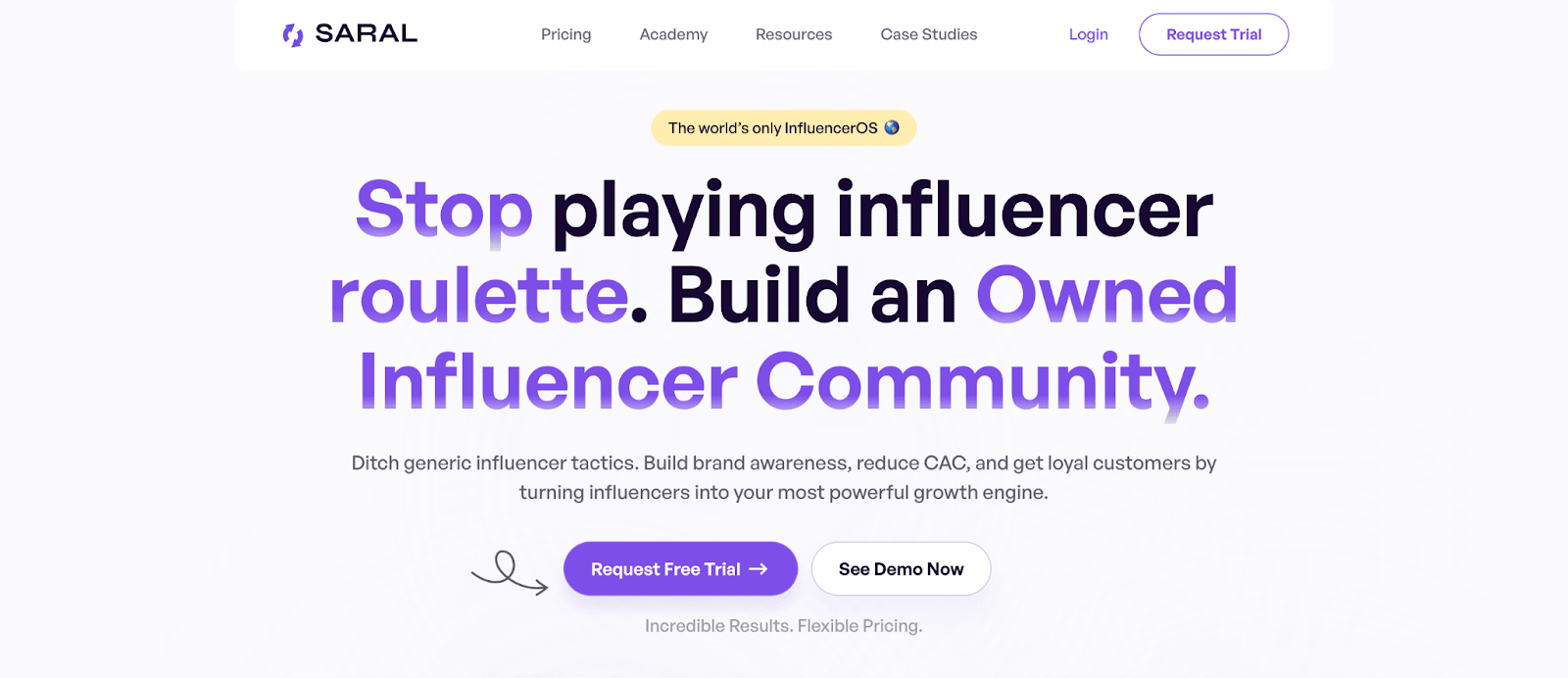
Best For: Saral is best suited for eCommerce brands and DTC companies that want an all-in-one influencer marketing platform combining discovery, outreach, gifting, and affiliate tracking with seamless Shopify integration.
Platform Coverage:
Pricing: All plans include a 1-week free trial; annual and quarterly payment options available.
Reviews: 4.7/5 (G2)
Ease of Use (UX/UI): Users praise Saral’s intuitive search interface and straightforward workflows. The Lookalike AI simplifies influencer sourcing, and automations for gifting and email outreach reduce manual tasks.
Customer Support: Customers report responsive support with detailed onboarding sessions and quick troubleshooting. The team is known for providing strategic guidance to help optimize campaigns.
When comparing BrandChamp with Saral, the main differences lie in focus and pricing. BrandChamp primarily caters to ambassador and community-driven programs with strong gamification, points-based rewards, and advocacy features, while Saral emphasizes influencer discovery, AI-powered outreach, and seamless product gifting with Shopify integration.
From a pricing perspective, BrandChamp is typically more cost-effective for brands seeking ambassador engagement and referrals, whereas Saral’s starting price of $12,000/year targets companies willing to invest more in advanced discovery tools and automation.
For businesses looking for a platform that combines modern influencer sourcing with built-in gifting and outreach automations, Saral is a strong choice. However, brands focused on ambassador communities and cost-efficiency might find BrandChamp to be the better fit.
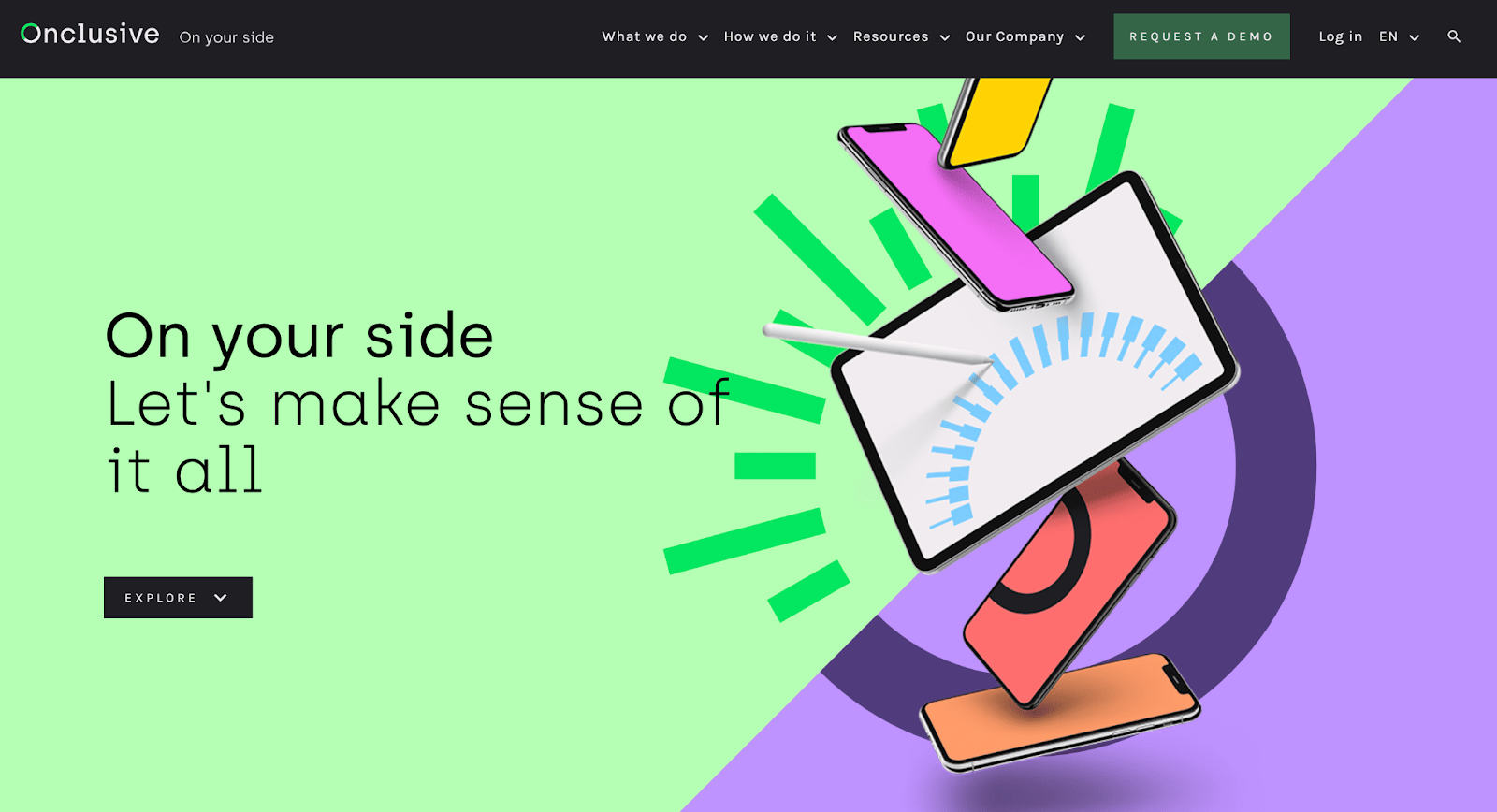
Best For: Onclusive is best for brands and agencies looking to combine influencer discovery with comprehensive media monitoring, including social media, TV, radio, online news, and podcasts. It is particularly useful for companies that want to track brand mentions across multiple channels while analyzing sentiment and media value.
Platform Coverage:
Pricing: Onclusive’s pricing ranges between $8,000–$20,000 annually, depending on the scope of media monitoring and included modules. Billing is typically annual, though monthly billing can be arranged with approval.
Reviews: 4.5/5 (G2)
Ease of Use (UX/UI): Users report that Onclusive has a robust interface with powerful filtering options, but there can be a learning curve for new users. Once onboarded, marketers appreciate its customizable dashboards and the ability to generate in-depth reports with ease.
Customer Support: Onclusive’s customer support stands out, with each client receiving a dedicated account manager. Users mention quick response times, personalized training, and proactive assistance in setting up queries and reports.
While BrandChamp focuses on ambassador and referral programs with strong community engagement and rewards, Onclusive excels in media monitoring and influencer analytics. BrandChamp is often chosen by eCommerce brands for its built-in referral tracking and ambassador portals, whereas Onclusive is preferred by companies needing cross-channel coverage and sentiment analysis.
In terms of pricing, BrandChamp offers more affordable options suitable for startups and D2C brands, while Onclusive starts at $8,000 annually, making it a better fit for mid-sized to enterprise-level businesses with larger budgets.
Users looking for advanced analytics, earned media tracking, and a dedicated account manager may find Onclusive worth the investment, while those seeking ambassador-focused campaigns at a lower cost might lean towards BrandChamp.
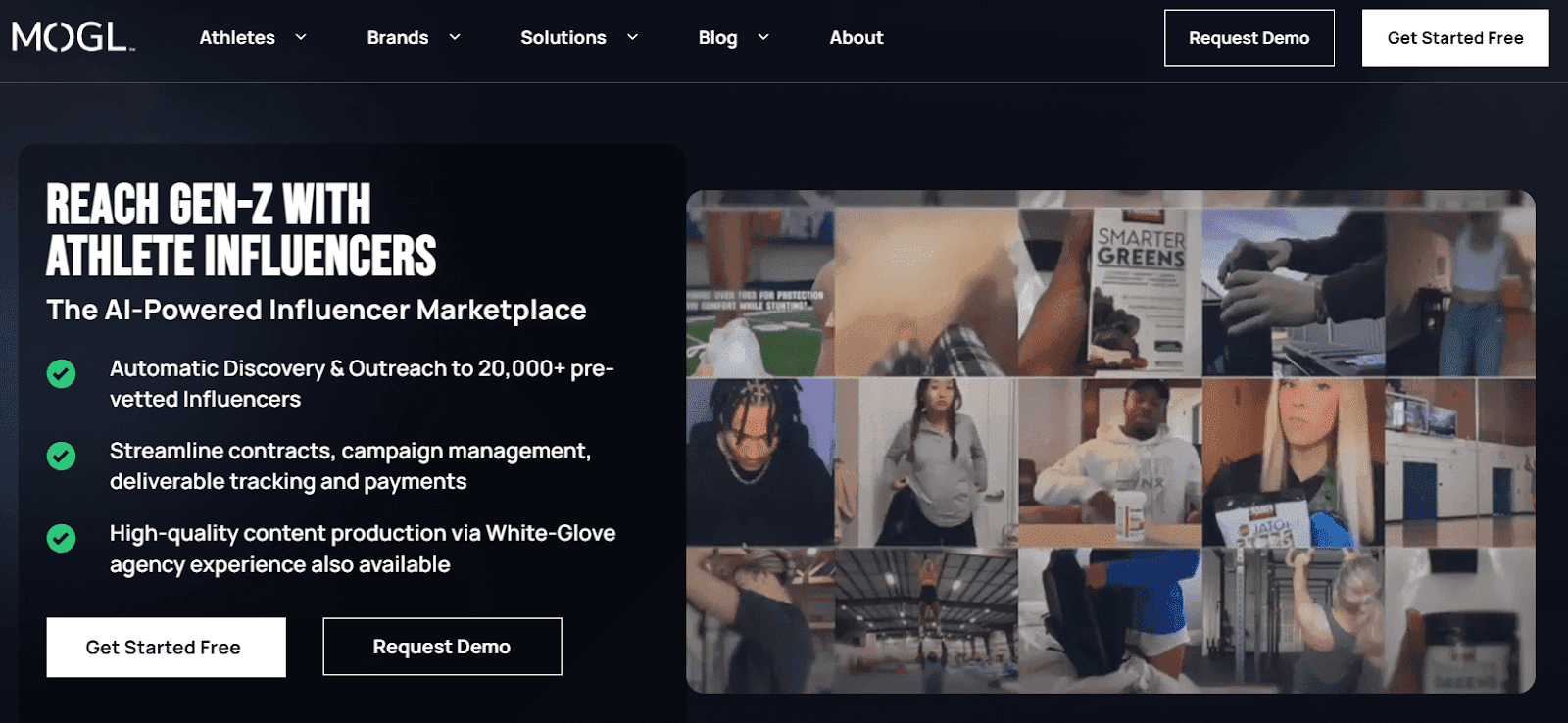
Best For: MOGL is ideal for brands targeting Gen-Z audiences through college athlete influencers in the U.S. It suits companies seeking performance-based campaigns with full content usage rights.
Platform Coverage:
Pricing:
Reviews: 4.5/5 (G2)
Ease of Use (UX/UI): Users appreciate MOGL’s clean interface and quick AI-based creator matching. However, some find its sports-centric design limiting for non-athletic campaigns.
Customer Support: Feedback suggests responsive support, especially for managed clients. The Elite plan offers personalized assistance, while lower tiers rely mainly on chat support.
MOGL Standout Features: (H4)
BrandChamp offers a community-driven ambassador platform, ideal for brands that prioritize long-term engagement and gamified participation. It supports multiple reward types, referral programs, and community features but lacks strong AI-powered discovery and advanced analytics.
MOGL, on the other hand, focuses heavily on performance and accountability with a pay-after-post model, AI creator scoring, and inbound applications, making it better suited for brands targeting college athletes and Gen-Z consumers. Its pricing starts at $0 with a pay-as-you-go model, while BrandChamp’s pricing tends to be higher and better suited for scaling ambassador networks with structured incentives.
For brands outside the sports niche or those needing broader influencer pools, BrandChamp remains a strong choice. However, for campaigns requiring rapid recruitment of U.S.-based athletes with full content rights, MOGL provides a cost-effective and streamlined solution.
While BrandChamp is strong in managing ambassador programs, its limited influencer discovery, basic analytics, and higher pricing push many brands to explore alternatives. Tools like Modash, Upfluence, and GRIN offer better discovery and reporting, while MOGL and Onclusive bring unique pricing and content features.
Influencer Hero emerges as the top alternative, offering all-in-one features from discovery to storefronts, paired with 24/7 support and competitive pricing. Book a demo with Influencer Hero today to see how it can streamline and scale your influencer marketing efforts!

Many brands look for alternatives because BrandChamp has limited influencer discovery features, less advanced analytics, and higher pricing compared to other platforms. Businesses needing more scalable influencer outreach and in-depth reporting often switch to solutions like Influencer Hero, which offers a full suite of tools at competitive rates.
Influencer Hero is widely considered one of the best alternatives because it combines influencer discovery, AI-powered outreach, CRM, content management, and affiliate tracking in a single platform. It also includes 24/7 support and a storefront feature that many competitors lack.
BrandChamp focuses primarily on ambassador programs, while Influencer Hero provides a broader range of capabilities, including influencer search across multiple platforms, advanced analytics, and seamless affiliate payment tracking. Additionally, Influencer Hero offers more cost-effective plans and dedicated support.
While most robust influencer marketing tools, including Influencer Hero, operate on paid plans, some alternatives offer limited free trials. However, free tools often lack advanced features such as detailed reporting, CRM integration, and automated outreach, which are crucial for scaling campaigns effectively.
For eCommerce businesses, Influencer Hero stands out due to its built-in affiliate payments, storefront integration, and flexible payment models for influencers. Other strong options include GRIN and Upfluence, which also cater well to Shopify and Amazon-based brands.



Schedule a Demo with one of our media experts below.